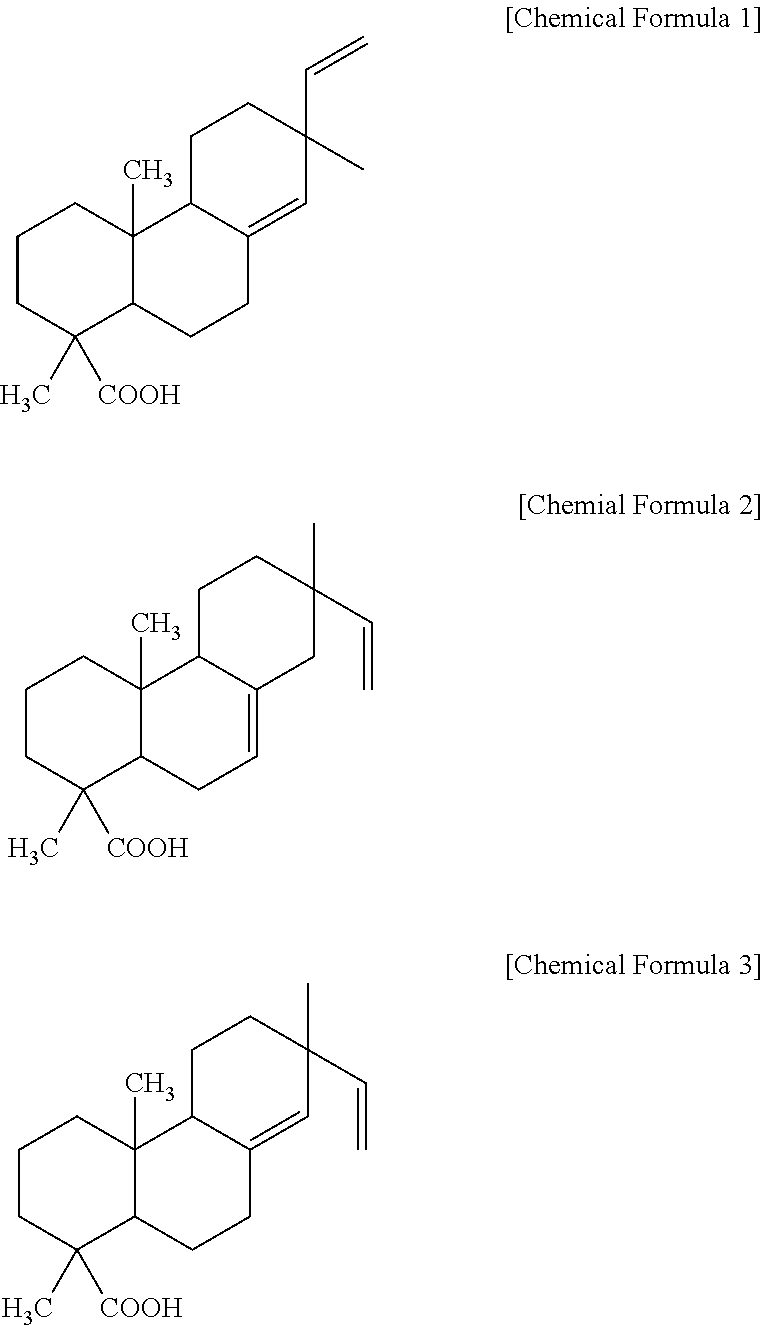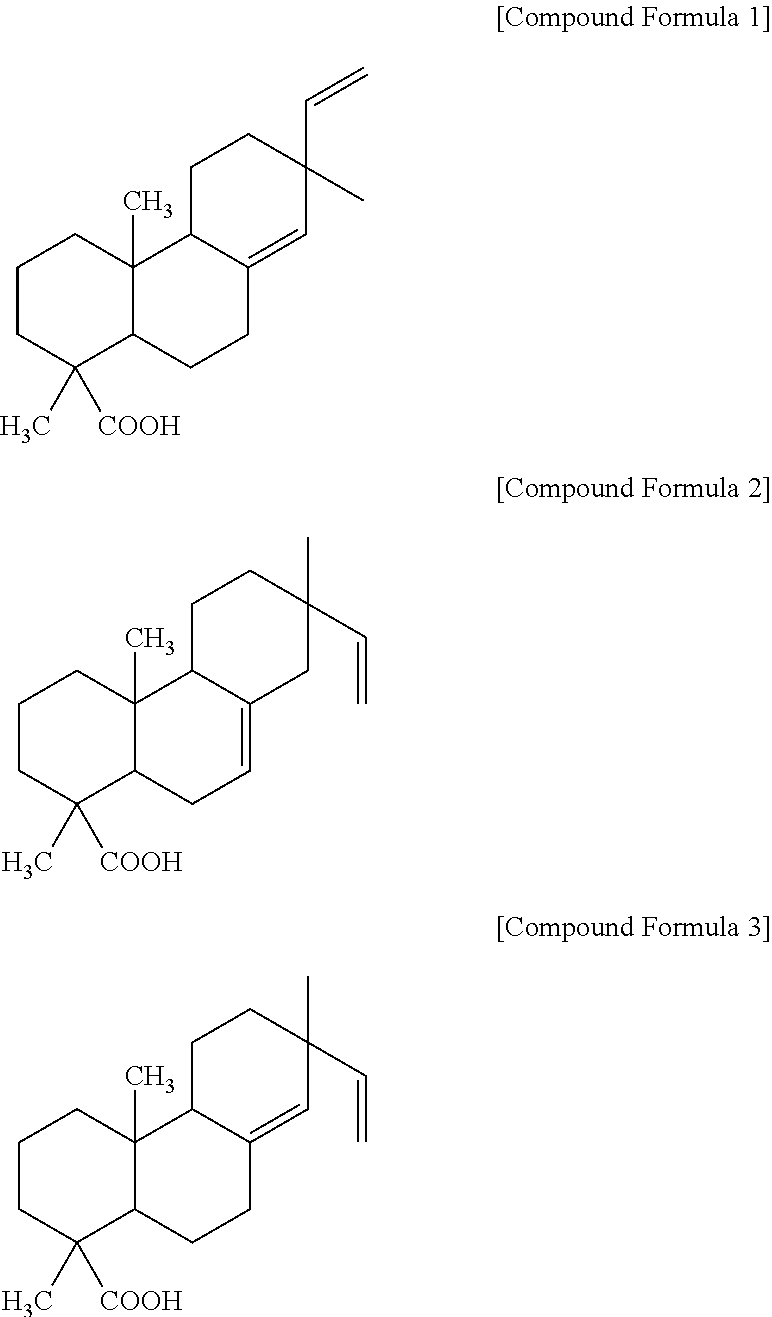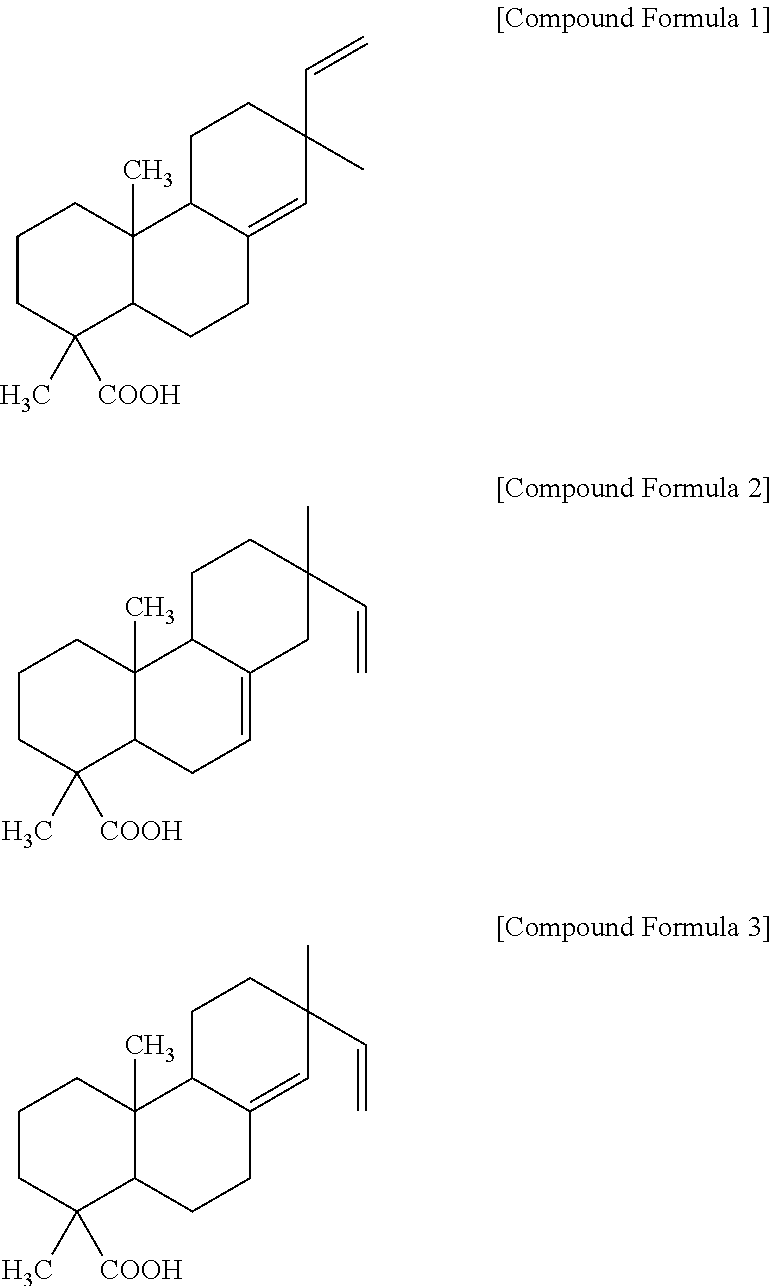Alkali-soluble polymer compound and photosensitive resin composition using the same
a technology of alkali-soluble polymer and resin composition, which is applied in the direction of microwave heating, electric/magnetic/electromagnetic heating, disinfection, etc., can solve the problems of reducing the area of the portion of the column spacer supporting the tft substrate, unable to improve the cleansing characteristics of the portion not exposed to light, and unable to prevent the entanglement of polymer chains, so as to improve the alkali development characteristics and improve the photopolymerization
- Summary
- Abstract
- Description
- Claims
- Application Information
AI Technical Summary
Benefits of technology
Problems solved by technology
Method used
Image
Examples
synthesis example 1
[0062]A binder polymer containing dehydrogenated pimaric acid represented by Chemical Formula 1 as above as dehydrogenated resin acid was synthesized in the following manner. 3 parts by weight of V-65 was dissolved as a thermal initiator in a solvent in a reaction container, into which 10 mol % of pimaric acid, 20 mol % of (meth)acrylic acid, and 70 mol % of benzyl methacrylate were put. The resultant material was reacted for 12 hours at 60° C. under a nitrogen atmosphere. Mol content rates of the obtained alkali-soluble polymer compound were 10%, 20%, and 70%, respectively, like those at the time when they were put in the solvent. An acid value of the alkali-soluble polymer compound was 98 KOH mg / g and a weight average molecular weight (Mw) was 25,000.
synthesis example 2
[0063]An alkali-soluble polymer compound was synthesized in the same manner as that of Synthesis Example 1, except that isopimaric acid represented by Chemical Formula 2 as above was used as dehydrogenated resin acid. An acid value of the alkali-soluble polymer compound obtained through Synthesis Example 2 was 98 KOH mg / g and a weight average molecular weight (Mw) was 25,300.
synthesis example 3
[0064]An alkali-soluble polymer compound was synthesized in the same manner as that of Synthesis Example 1, except that sandaracopimaric acid represented by Chemical Formula 3 as above was used as dehydrogenated resin acid. An acid value of the alkali-soluble polymer compound obtained through Synthesis Example 3 was 98 KOH mg / g and a weight average molecular weight (Mw) was 24,800.
PUM
| Property | Measurement | Unit |
|---|---|---|
| wavelength | aaaaa | aaaaa |
| thickness | aaaaa | aaaaa |
| diameter | aaaaa | aaaaa |
Abstract
Description
Claims
Application Information
 Login to View More
Login to View More - R&D
- Intellectual Property
- Life Sciences
- Materials
- Tech Scout
- Unparalleled Data Quality
- Higher Quality Content
- 60% Fewer Hallucinations
Browse by: Latest US Patents, China's latest patents, Technical Efficacy Thesaurus, Application Domain, Technology Topic, Popular Technical Reports.
© 2025 PatSnap. All rights reserved.Legal|Privacy policy|Modern Slavery Act Transparency Statement|Sitemap|About US| Contact US: help@patsnap.com



